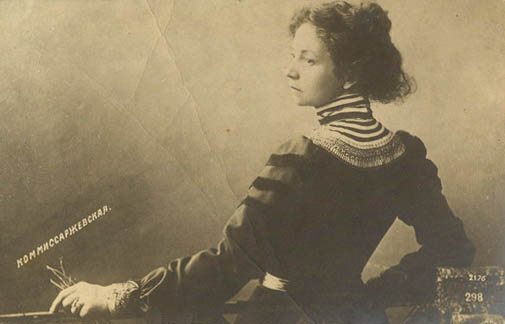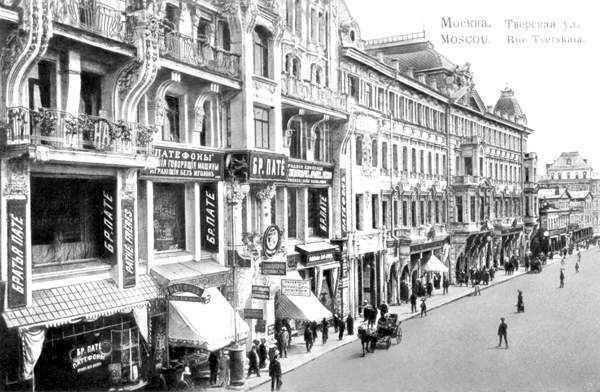|
The Fruits Of Enlightenment
''The Fruits of Enlightenment'', aka ''Fruits of Culture'' (1889-90, pub. 1891) is a play by the Russian writer Leo Tolstoy. It satirizes the persistence of unenlightened attitudes towards the peasants amongst the Russian landed aristocracy. In 1891 Constantin Stanislavski achieved success when he directed the play for his Society of Art and Literature organization. Tolstoy created the first, incomplete draft of the play in 1886, along with ''The Power of Darkness''. Three years later, his children and wife persuaded him to complete the manuscript sufficiently for a house performance in Yasnaya Polyana. Tolstoy initially denied the proposal but quickly took the lead in directing the amateur actors; the cast included twenty six of his children, two nieces, a court prosecutor from Tula and a judge from Moscow. This first performance was on 30 December 1889. According to Sergei Tolstoy, the 1889 play deliberately reflected the realities of Yasnaya Polyana and the neighboring country es ... [...More Info...] [...Related Items...] OR: [Wikipedia] [Google] [Baidu] |
Constantin Stanislavski
Konstantin Sergeyevich Stanislavski ( Alekseyev; russian: Константин Сергеевич Станиславский, p=kənstɐnʲˈtʲin sʲɪrˈgʲejɪvʲɪtɕ stənʲɪˈslafskʲɪj; 7 August 1938) was a seminal Soviet Russian theatre practitioner. He was widely recognized as an outstanding character actor and the many productions that he directed garnered him a reputation as one of the leading theatre directors of his generation. His principal fame and influence, however, rests on his "system" of actor training, preparation, and rehearsal technique. Stanislavski (his stage name) performed and directed as an amateur until the age of 33, when he co-founded the world-famous Moscow Art Theatre (MAT) company with Vladimir Nemirovich-Danchenko, following a legendary 18-hour discussion. Its influential tours of Europe (1906) and the US (1923–24), and its landmark productions of ''The Seagull'' (1898) and ''Hamlet'' (1911–12), established his reputation and opene ... [...More Info...] [...Related Items...] OR: [Wikipedia] [Google] [Baidu] |
Vladimir Nemirovich-Danchenko
Vladimir Ivanovich Nemirovich-Danchenko (russian: Владимир Иванович Немирович-Данченко; , Ozurgeti – 25 April 1943, Moscow), was a Soviet and Russian theatre director, writer, pedagogue, playwright, producer and theatre administrator, who founded the Moscow Art Theatre with his colleague, Konstantin Stanislavski, in 1898.Немирович-Данченко Владимир Иванович Biography Vladimir Ivanovich Nemirovich-Danchenko was born into a Russian noble f ...[...More Info...] [...Related Items...] OR: [Wikipedia] [Google] [Baidu] |
Ilya Repin
Ilya Yefimovich Repin (russian: Илья Ефимович Репин, translit=Il'ya Yefimovich Repin, p=ˈrʲepʲɪn); fi, Ilja Jefimovitš Repin ( – 29 September 1930) was a Russian painter, born in what is now Ukraine. He became one of the most renowned artists in Russia during the 19th century. His major works include ''Barge Haulers on the Volga'' (1873), '' Religious Procession in Kursk Province'' (1880–1883), ''Ivan the Terrible and His Son Ivan'' (1885); and ''Reply of the Zaporozhian Cossacks'' (1880–1891). He is also known for the revealing portraits he made of the leading literary and artistic figures of his time, including Mikhail Glinka, Modest Mussorgsky, Pavel Tretyakov and especially Leo Tolstoy, with whom he had a long friendship. Repin was born in Chuguyev, in Kharkov Governorate of the Russian Empire. His father had served in an Uhlan Regiment in the Russian army, and then sold horses. Repin began painting icons at age sixteen. He failed at his first ... [...More Info...] [...Related Items...] OR: [Wikipedia] [Google] [Baidu] |
Alexandrinsky Theater
The Alexandrinsky Theatre (russian: Александринский театр) or National Drama Theatre of Russia is a theatre in Saint Petersburg, Russia. The Alexandrinsky Theatre was built for the Imperial troupe of Petersburg (Imperial troupe was founded in 1756). Since 1832, the theatre has occupied an Empire-style building that Carlo Rossi designed. It was built in 1828–1832 on Alexandrinsky Square (now Ostrovsky Square), which is situated on Nevsky Prospekt between the National Library of Russia and Anichkov Palace. The theatre was opened on 31 August (12 September) 1832. The theatre and the square were named after Empress consort Alexandra Feodorovna. The building is part of the UNESCO World Heritage Site Historic Centre of Saint Petersburg and Related Groups of Monuments. It was one of the many theatres of the Imperial troupe. Dramas, operas and ballets were on the stage. Only in the 1880s, the theatre has become dramatic and tragedy filled. The premières of n ... [...More Info...] [...Related Items...] OR: [Wikipedia] [Google] [Baidu] |
Saint Peterburg
Saint Petersburg ( rus, links=no, Санкт-Петербург, a=Ru-Sankt Peterburg Leningrad Petrograd Piter.ogg, r=Sankt-Peterburg, p=ˈsankt pʲɪtʲɪrˈburk), formerly known as Petrograd (1914–1924) and later Leningrad (1924–1991), is the second-largest city in Russia. It is situated on the Neva River, at the head of the Gulf of Finland on the Baltic Sea, with a population of roughly 5.4 million residents. Saint Petersburg is the fourth-most populous city in Europe after Istanbul, Moscow and London, the most populous city on the Baltic Sea, and the world's northernmost city of more than 1 million residents. As Russia's Imperial capital, and a historically strategic port, it is governed as a federal city. The city was founded by Tsar Peter the Great on 27 May 1703 on the site of a captured Swedish fortress, and was named after apostle Saint Peter. In Russia, Saint Petersburg is historically and culturally associated with ... [...More Info...] [...Related Items...] OR: [Wikipedia] [Google] [Baidu] |
Vasily Luzhsky
Vasily Vasilyevich Luzhsky (russian: Василий Васильевич Лужский, born Kaluzhsky, Калужский; 31 December 1869, — 2 July 1931, Moscow, USSR) was a Russian, Soviet stage actor, theatre director and pedagogue, associated with the Moscow Art Theatre. Biography Born in Shuya, Vladimir Governorate, to a merchant family, Kaluzhsky debuted in 1890 on stage the Art and Literature Society, where he played 44 parts, some of which were later repeated in MAT, including that of Sir Toby in Shakespeare's ''The Twelfth Night''. In 1898 he joined Konstantin Stanislavski's original troupe and played Shuisky in the Moscow Art Theatre's very first production, that of ''Tsar Fyodor Ioannovich'' by Alexey K. Tolstoy.Yampolsky, Igor. Commentaries to Царь Фёдор Иоаннович. Pravda Publishers. 1987, p. 529 The same year he played Sorin in what came to be recognized later as the groundbreaking production of Anton Chekhov's ''The Seagull'' and soon became ... [...More Info...] [...Related Items...] OR: [Wikipedia] [Google] [Baidu] |
Maria Lilina
Maria Petrovna Alexeyeva (russian: Мари́я Петро́вна Алексе́ева, Perevoshchikova, Перево́щикова, 21 June 1866 - 24 August 1943) was a Russian stage actress, associated with the Moscow Art Theatre, better known under her stage name Lilina (Ли́лина). Konstantin Stanislavski, the MAT director, was her husband. In 1933 Lilina was designated as a Meritorious Artist of RSFSR.Maria Petrovna Lilina Biography at the Moscow Art Theatre site Career Lilina was a founding member of the MAT troupe which she joined in 1898. Her two breakthrough performances, which brought her to fame, were Masha in '''' and Sonya in '' |
Vera Komissarzhevskaya
Vera Fyodorovna Komissarzhevskaya (russian: Ве́ра Фёдоровна Комиссарже́вская; 8 November 1864 – 23 February 1910) was one of the most celebrated actresses and theatre managers of the late Russian Empire. She made her professional debut in 1893, after having acted as an amateur at Constantin Stanislavsky's Society of Art and Literature. She is probably best known today for originating the role of Nina in the ill-fated premiere of Anton Chekhov's ''The Seagull'', at the Alexandrinsky Theatre in Saint Petersburg in 1896. Though the production was deemed an utter failure, Komissarzhevskaya's performance was highly praised. Later in her career, Komissarzhevskaya is notable for her patronage of the up-and-coming theatre artist, Vsevolod Meyerhold. Following Meyerhold's unsuccessful attempts to stage symbolist plays at Stanislavsky's Moscow Art Theatre, Komissarzhevskaya invited him to try his experiments at her new Dramatic Theatre. During their shor ... [...More Info...] [...Related Items...] OR: [Wikipedia] [Google] [Baidu] |
Tverskaya Street
Tverskaya Street ( rus, Тверская улица, p=tvʲɪrˈskajə ˈulʲɪt͡sə), known between 1935 and 1990 as Gorky Street (russian: улица Горького), is the main radial street in Moscow. The street runs Northwest from the central Manege Square in the direction of Saint Petersburg and terminates at the Garden Ring, giving the name to Tverskoy District. The route continues further as First Tverskaya-Yamskaya Street, Leningradsky Avenue and Leningradskoye Highway. History and architecture Middle Ages to 18th century Tourists are told that Tverskaya Street existed as early as the 12th century. Its importance for the medieval city was immense, as it connected Moscow with its superior, and later chief rival, Tver. At that time, the thoroughfare crossed the Neglinnaya River. The first stone bridge across the Neglinnaya was set up in 1595. In the 17th and 18th centuries, Tverskaya Street was renowned as the centre of Moscow's social life. The nobility co ... [...More Info...] [...Related Items...] OR: [Wikipedia] [Google] [Baidu] |
Amateur Theatre
Amateur theatre, also known as amateur dramatics, is theatre performed by amateur actors and singers. Amateur theatre groups may stage plays, revues, musicals, light opera, pantomime or variety shows, and do so for the social activity as well as for aesthetic values. Productions may take place in venues ranging from the open air, community centres, or schools to independent or major professional theatres. Amateur theatre is distinct from the professional or community theatre because performers are usually not paid. Amateur actors are not typically members of actors' unions. Definition Opinions vary on how to define "amateur" in relation to theatre. Technically speaking, an "amateur" is anyone who does not accept, or is not offered, money for their services. One interpretation of this is: "One lacking the skill of a professional, as in an art". Another is: "A person who engages in an art, science, study, or athletic activity as a pastime rather than as a profession". An amateur a ... [...More Info...] [...Related Items...] OR: [Wikipedia] [Google] [Baidu] |
Alexander Yuzhin
Alexander Ivanovich Yuzhin (russian: Алекса́ндр Ива́нович Ю́жин; 1857–1927) was a stage name of the Georgian Prince Sumbatov (Sumbatashvili), who dominated the Malyi Theatre of Moscow at the turn of the 19th and 20th centuries. He was best known for the Romantical parts in the dramas by Schiller and Victor Hugo but also penned a number of plays himself. Yuzhin lived on to become one of the first People's Artists of the Republic in 1922. He was a freemason. Initiated to February 17, 1908 in the masonic lodge "Renaissance" (Grand Orient of France The Grand Orient de France (GODF) is the oldest and largest of several Freemasonic organizations based in France and is the oldest in Continental Europe (as it was formed out of an older Grand Lodge of France in 1773, and briefly absorbed the r ...).Серков А. И. Русское масонство. 1731—2000 гг. Энциклопедический словарь. М.: Российская пол ... [...More Info...] [...Related Items...] OR: [Wikipedia] [Google] [Baidu] |
Leo Tolstoy
Count Lev Nikolayevich TolstoyTolstoy pronounced his first name as , which corresponds to the romanization ''Lyov''. () (; russian: link=no, Лев Николаевич Толстой,In Tolstoy's day, his name was written as in pre-reformed Russian. ; ), usually referred to in English as Leo Tolstoy, was a Russian writer who is regarded as one of the greatest authors of all time. He received nominations for the Nobel Prize in Literature every year from 1902 to 1906 and for the Nobel Peace Prize in 1901, 1902, and 1909; the fact that he never won is a major controversy. Born to an aristocratic Russian family in 1828, Tolstoy's notable works include the novels ''War and Peace'' (1869) and ''Anna Karenina'' (1878), often cited as pinnacles of realist fiction. He first achieved literary acclaim in his twenties with his semi-autobiographical trilogy, ''Childhood'', '' Boyhood'', and ''Youth'' (1852–1856), and '' Sevastopol Sketches'' (1855), based upon his experiences in ... [...More Info...] [...Related Items...] OR: [Wikipedia] [Google] [Baidu] |






.jpg)

